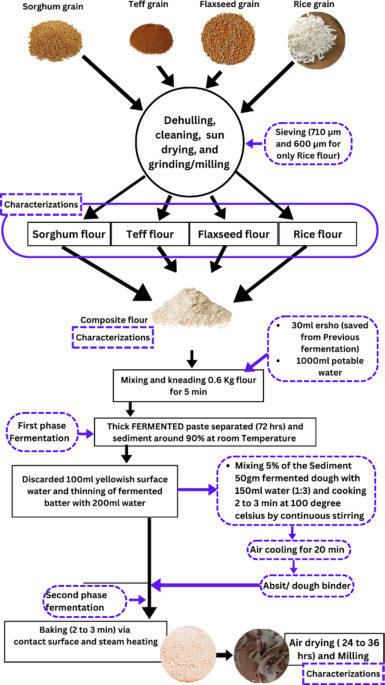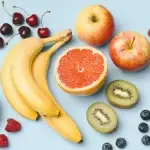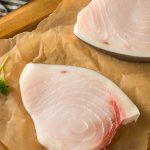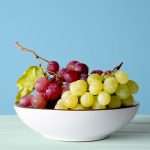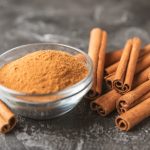The moisture content material of the combined baked injera ranged from 60.03 to 64.31%. In distinction, the moisture content material of the management injera, made solely from sorghum and teff flour, was 59.46% and 63.05%, respectively. This means that mix ratios have an effect on moisture variation and softness underneath managed baking circumstances. As reported in 1946, injera produced from quite a lot of grains has a moisture content material of over 50%. Moreover, 35, and 47 confirmed that the moisture content material of the blended injera merchandise can attain 62-65%.
The bottom moisture content material (60.03%) was present in injera outfitted with BR2 (50% sorghum, 20% rice, 30% TEFF), whereas the best moisture content material (64.31%) for BR3 (46.5% sorghum, 23.5% rice, TEFF) was noticed. As detailed in Desk 2, the moisture content material of the formulated jets decreased with greater sorghum flour composition and elevated considerably with teff and rice. The preliminary moisture content material of sorghum and teff flour was not important (P Ingera had higher moisture loss throughout storage in comparison with Teff Ingera12).
In response to 23,49, supplementation of linseed flour in grain merchandise has a constructive impact on moisture retention throughout storage after baking as a consequence of the opportunity of water binding. The interactions between the elements of the formulated jets confirmed important variations (PP Teff, and Rice with Teff (r²=0.9476) (Desk 2). The anticipated moisture content material of the formulated injera is estimated in Equation 14.
$$:textual content{m}textual content{c}:=1.5625text{*}textual content{s}textual content{o}textual content{r}textual content{g}textual content{h}textual content{u}textual content{m}:-10.595555555555555555555555555555555555555555555555555555555555555555555555555555555555555555555555555555555555555555555555555555555555555555555555555555555555555555555555555555555555555555555555555555555555555555555555555555555555555555555555555555555555555555555555555555555555555555555555555555555555555555555555555555555555555555555555555555555555555555555555555555555555555555555555555555555555555555555555555555555555555555555555 :+:0.1606 textual content {*} textual content {s} textual content {o} textual content t {g} textual content {h} textual content {u} textual content {m} textual content {*} textual content {r} textual content {i} textual content {c} textual content {e} +0.1349 textual content {*} textual content {s} textual content {o} textual content {g} textual content {h} textual content {m} textual content {*} teff :+:0.1572 textual content {*} textual content {r} textual content {i}textual content {c}textual content {e}textual content
(14)
On this examine, ash content material was recorded within the vary of 1.82-2.40% of Mix Ingera. Then again, the ashes of sorghum and teff powder spray ash are 1.70% and a couple of.31%, respectively. The system mix injera BR4 and three% flaxseed flour complement consisting of 46.5% sorghum, 27% rice, and 26.5% Teff confirmed a minimal complete ash content material of 1.82%. In distinction, a complete ash content material of two.40% was present in blended injera pattern BR5, consisting of 43% sorghum, 27% rice, 30% TEFF, and three% flaxseed flour substitution. Because the composition of rice and sorghum flour elevated, the content material of ash additionally decreased, however the composition of teff flour elevated linearly (eq. 15). The analysed outcomes confirmed that the ash content material of injera optimization was considerably affected (p 3). In response to To11, 30,50, injera produced from a blended powder with excessive teff flour reveals the next ash content material as a result of greater quantity of minerals and ash in teff flour from different cereals. The anticipated linear and quadratic fashions between sorghum, rice, and teff have been considerably totally different between sorghum management injera (R2 = 0.9587).
$$start{aligned}{textual content{ash~content material~}} =&{textual content{~}} -0.12069 {textual content{*sorghum~}} -1.02769 {textual content{*rice}} +++ {textual content{~}} 1.97975 {textual content{*}} teff {textual content{~}} +0.03141 {textual content{*sorghum*rice}} & – {textual content{~}} 0.03153 {textual content{*sorghum*}} teff {textual content{~}} – {textual content{~}} 0.02500 {textual content {*rice*}} teff {textual content {}} \
(15)
Crude fats ranges injera formulated with 3% flaxseed flour complement ranged from 2.50-3.20%. In distinction, the crude fats content material of 100% sorghum and teff flour injera (used as a management) was 2.02% and 1.98%, respectively. There have been very important variations (P Teff, and Teff rice, are proven in linear and quadratic fashions (R² = 0.9733) (Desk 2).
The bottom fats content material (2.5%) was present in BR4 Ingera, made with a mix of 46.5% sorghum, 27% rice, and 26.5% Teff. Conversely, the best crude fats content material (3.20%) was noticed in BR2 Ingera, consisting of fifty% sorghum, 20% rice, and 30% Teff. The presence of sorghum in these blends elevated the crude fats content material of the injera. This enhance is as a result of comparatively excessive fats content material present in sorghum flour (2.10-7.60%, 51) and to the rice flour (1.6-2.8 mg/100g52,53).
$$start{aligned}{textual content{impolite~fats~}} =&{textual content{~}} – 0.50724 {textual content{*sorghum~}} – {textual content{~}} 1.55159 {{{{*rice~}} – {textual content{~}} 1.23141 {textual content{*}} teff {textual content{~}} + {textual content{~}} 0.03114 {textual content{*sorghum*rice~}} & + {textual content{~~}} 0.02736 {textual content{*sorghum*}} teff {textual content {~}} + {textual content {~}} 0.03960 {textual content {*rice*}} teff
(16)
The crude fiber content material of the formulated injera ranged from 2.40 to 4.50%, as proven in Desk 3. The very best crude fiber content material (4.50%) was noticed in injera produced from mix ratios BR4 (46.5% sorghum, 27% rice, 26.5% TEFF) and BR5 (43% SORGHUM, 27% RICE, 30% TEFF). Conversely, the bottom crude fiber content material (2.40%) was present in BR2 (50% sorghum, 20% rice, 30% TEFF), BR3 (46.5% sorghum, 23.5% TEFF), and injera (2.40%) from BR10 (50% sorghum, 23.5% RICE, 26.5% TEFF). The injera made with 100% sorghum flour (management) had a crude fiber content material of three.69%, which is greater than that of injera made with 100% teff flour (management) and had a content material of two.83%. There have been important variations (P Teff flour. The crude fiber content material of the blended injera samples was closely influenced by the addition of brown rice flour, after which the quantity of flaxseed flour remained fixed for every mix (Fig. 2). The flour injera samples different from 0.8 to 1.0% and three.91 to five.2%, respectively.
$$start{aligned}{textual content{impolite~fiber~mannequin~}} =&{textual content{~}} 0.00748 {textual content{*sorghum~}} +{textual content{~}} 6.08400 {textual content{*rice~}} { – } {textual content{~}} 3.70515 {textual content{*}} teff {textual content{~}}} { – } 0.11436 {& + {textual content{~}} 0.08156 {textual content{*sorghum*}} teff {textual content{~}} { – textual content{~}} 0.02644 {textual content {*rice*}} teff
(17)
The crude fiber content material of Ingera based mostly on the mix ratios was extremely important distinction between each linear and quadratic fashions when sorghum was mixed with rice flour and teff flour. The mannequin confirmed important variations (p
The crude protein content material of the formulated injera ranged from 9.00 to 9.31%, whereas the management injera merchandise from Sorghum and Teff contained 8.91% and eight.14% of crude protein, respectively (Desk 3). The protein content material of all formulated injera merchandise confirmed a really important distinction (Rice with P TEFF flour and TEFF flour. Important variation was additionally noticed within the interplay between sorghum and rice. The very best relative protein content material (9.31%) was present in injera ready with BR2 mix (50% sorghum, 20% rice, 30% TEFF) (9.66) (9.6.00%) was discovered) and BR9 (48.83% sorghum, 25.83%, 25.34% TEFF) mix.
The elevated protein content material of the formulated injera was attributed to a excessive proportion of sorghum and teff regardless of the fixed supplementation of excessive protein content material flaxseeds. Nonetheless, define plots and mannequin predictions confirmed that the protein content material of the formulated jet was affected by teff flour, adopted by rice flour (Fig. 2 and eq. 18). The noticed enhance in protein content material could also be as a consequence of improved or optimized protein content material by blends and sophisticated flours, and could also be associated to element degradation following enzyme synthesis or modifications in compositional share.56 Regardless of the fixed addition of flaxseed, its protein content material remained very important. Earlier research reported a mean composite flour injera protein content material starting from 7.47 to 14.74%, according to findings of 13,18,50,57. The coefficient of willpower for the interplay mannequin was R² = 0.9707.
$$start{aligned}{textual content{protein~content material~}} =&{textual content{~}} 0.276329 {textual content{sorghum~}} + {textual content{~}} 0.577828 {textual content{rice~}} + {textual content{~}} 0.973288teff {textual content{~}} -0.007667 {textual content{sorghum~*rice}} &{ – } 0.016570 {textual content{sorghum*}} teff {} 0.021244} {} 0.021244 finish {aligned} $$
(18)
The carbohydrate content material of the formulated injera ranged from 81.39-83.67%, with management values of sorghum and teff flour injera have been 83.68% and 84.74%, respectively. The very best carbohydrate content material (83.67%) was present in Ingera BR2 (50% sorghum, 20% rice, 30% TEFF), whereas the bottom (81.39%) was BR5 (43% sorghum, 27%, TEFF) (Desk 3). There have been important variations (P Teff flour (Desk 2). The carbohydrate content material of blended baked injera elevated with the proportion of teff flour, adopted by sorghum flour, and rose (Fig. 3 & eq. 19). 73.89-86.8%, collaborating with 57,58 survey outcomes.
$$start{aligned}{textual content{complete~carbohydrate~}} =&{textual content{~}} 1.32599{textual content{*sorghum~}} 3.0618{textual content{*rice~}} + {textual content{~}} 2.97857 {textual content{*}} teff + 0.05962 {textual content{*sorghum~*rice}} &{ – } 0.06016 {textual content{*sorghum*}} teff + 0.0324 {** finish{aligned} $$
(19)
Interplay mannequin coefficient measurements (R2 = 0.9704%).
Whole power values for the formulated injera ranged from 388.40 to 398.26 kcal/100 g, and management samples of 100% sorghum and teff powder injera confirmed power values of 388.40 and 398.26 kcal/100 g, respectively (Desk 3). The very best power content material was present in injera produced from BR2 blends (50% sorghum, 20% rice, 30% teff), whereas the bottom was BR5 blends (43% sorghum, 27% rice, 30%). There have been very important variations (the distinction between P ejecta, sorghum and teff was not important in each linear and quadratic fashions together with water sorghum and rice and teff rice (Desk 2). 380.25 kcal/100 g, elevated power values for the prescribed injera was attributed to the excessive carbohydrate content material of sorghum, rice, and teff flour used within the examine.
$$start {aligned} {textual content {Power~mannequin~equation~}} =&{textual content {~}} 1.8525 {textual content {*sorghum~}} {-} 24.0421 {textual content {*rice~}} + {textual content {~}} 4.7608 {textual content {*}} teff {textual content {~}} + {textual content {~}} 0.4903 {textual content {*sorghum*rice~}} & – {textual content {~}} 0.0621 {textual content {*sorghum*}} teff {textual content {~}} + {textual content {~}} 0.4026 {textual content {*rice*}} teff \{aligned} $$
(20)
The plant content material of injera, produced from varied composite flours, ranged from 175.66 to 177.93 mg/100 g. Particularly, the vegetate ranges of 100% sorghum and teff flour have been 178.26 mg/100 g and 176.14 mg/100 g, respectively. The very best phytoate content material (177.93 mg/100 g) was discovered within the BR7 mix (45.34% sorghum, 25.83% rice, 28.83% TEFF), whereas the bottom phytoate content material (175.66 mg/100 g) was noticed within the BR9 mix (48.83% orghum, 25.83% Cife, 25.83% Cifh, 25.83% Ciff). Teff powder has a decrease vegetable acid content material in comparison with sorghum powder, however the elevated proportion of Teff within the composite powder brought about the next phytate focus in injera. Desk 4 exhibits the degrees of anti-trophic elements, complete phenols, and complete flavonoid content material within the injera samples.
The plantate content material of injera produced from blends is according to the survey reported 11,51,60 by 11,51,60. The plant content material of Ingera, produced from Teff flour, corresponds to the outcomes which have been reported particularly. This examine confirmed no important variations (p 1,61, but in addition supplies well being advantages corresponding to anti-inflammatory and anti-cancer properties 24,30. In response to the mannequin (Equation 21) and the contour plot of the combination (Determine 4), the rise within the proportion of teff powder and the succession of rice and sorghum will increase the content material of phytoate salts.
$$start{aligned}{textual content{phytate~content material~}} =&{textual content{~}} 1.11458 {textual content{*sorghum~}} + {textual content{~}} 1.62260 {{*rice~}} + {textual content{~}} 2.91276 {textual content{*}} teff {textual content{~}} + 0.02397 {textual content{*sorghum*rice}} & + {textual content{~}} 0.00023 {textual content{*sorghum*}} teff {textual content{~}} { – } { textual content {~}} 0.03712 { textual content {*rice*}} teff
(twenty one)
Whole phenol (TP) content material ranged from 3.03 to five.39 mg/100 g, and phenol ranges for particular person sorghum and teff flour injera have been 4.07 mg/100 g and 4.70 mg/100 g, respectively. The very best phenol content material (5.39 mg/100 g) was decided in blended injera ready from BR2 (50% sorghum, 20% rice, 30% TEFF), whereas the bottom phenol content material (3.03 mg/100 g) was current in BR5 (43% sorghum, 27% rice, 30%). Whole phenol outcomes for combined ingela merchandise present that the expected mannequin response composition of sorghum powder was elevated, much like the define plot of the combination. A To62 examine confirmed that the full phenol focus of sorghum powder spray yielded 3.69 mg/100 g, according to the present examine outcomes. Varied literature works spotlight or report that the noticed white sorghum flour within the complete phenol content material of injera agrees to 63,64 bytes, and one other scientific justification has been reported in research which have reported. The outcomes present important variations (P Teff (Desk 5).
$$:textual content{t}textual content{p}:=:1.53981text{*}textual content{s}textual content{o}textual content{r}textual content{g}textual content{h}textual content{u}textual content{m}:::Xt{*}textual content{r}textual content{i}textual content{c}textual content{e}: – :3.33204text{*}teff: – :0.01239text{*}textual content{s}textual content{g}textual content{h}textual content{u} textual content {m}textual content {*}textual content {r}textual content {i}textual content {c}textual content {e}: – :0.00256text {*}textual content {s}textual content {s}}textual content {g}textual content {h}textual content {u}textual content {m}textual content {*} teff : – :0.17912text {*}textual content {r}textual content {i}textual content {c}textual content textual content {e}”
(twenty two)
The plant content material of injera produced from blends is according to the findings reported by 11,43,51. The plant content material of Ingera, produced from Teff flour, corresponds to the outcomes which have been reported particularly. This examine confirmed no important variations (p 1,61, but in addition affords well being advantages corresponding to anti-inflammatory and anti-cancer properties 30,65. In response to the mannequin (Equation 22) and the contour plot of the combination (Determine 5), a rise within the proportion of plant powder will increase the phytoate content material adopted by rice and sorghum.
$$start{aligned}{textual content{ct~mannequin~}} =&{textual content{~}} – 0.093574 {textual content{*sorghum~}} + {textual content{~}} 0.045484 {textual content{*rice~}} { – } {textual content{~}} 0.143202 {textual content{*}} teff {textual content{~}} + {textual content{{~}} 0.001069 {} sor & + {textual content{~}} 0.00480 {textual content{*sorghum*}} teff {textual content{~}} – { textual content {~}} 0.000385 {textual content {*rice*}} teff
(twenty three)
The condensed tannin (CT) content material of injera made with totally different composite flour ratios ranged from 0.00 to 0.17 mg/100 g. Management sprays produced from sorghum and teff powders confirmed CT content material of 0.04 mg/100 g and 0.00 mg/100 g, respectively. A major imply distinction (p>0.05) was noticed between every mixing ratio and management when it comes to every mixing ratio and condensed tannin content material, as proven in Desk 4. Among the many 10 blended injera merchandise, the best condensed tannin content material (0.17 mg/100 g) was present in BR8. This variation in CT content material could also be attributed to variations in fermentation composition 66. These findings are according to earlier studies11,63,67,68, indicating that white sorghum and teff flours have very low or no tannin content material, respectively. The next contour plot (Determine 5) and mannequin (Equation 23) present that growing quantities of brown rice will increase the focus of condensed tannins, whereas a rise within the composition of white sorghum and teff powder results in a lower within the focus of condensed tannins.
The overall flavonoid (TF) content material of the blended injera ranged from 298.5 to 388.2 mg/100 g. For comparability, injera made solely with sorghum and teff flours, the TF content material of injera was 289.9 mg/100 g and 304.9 mg/100 g, respectively. The very best TF content material (388.2 mg/100 g) was noticed with the BR6 mix (47.67% sorghum, 24.67%, rice, 27.66% TEFF), whereas the bottom TF content material (289.9 mg/100 g) was discovered with the BR5 mix (43% SORGHUM, 27% ICE, 30% TEFF). These findings recommend that flavonoid content material is derived from the outer layer and is according to earlier research on flavonoid content material in grains corresponding to sorghum, rice, teff, and flaxseed 63, 64, 69, 70, 70, 71. Flavonoids are current in small quantities in sorghum, teff, rice and flaxseed flour. Even so, the outcomes present that the general flavonoid content material was decreased in blended injera meals because the sorghum and rice flour composition elevated within the contour plot of the combination, however comparatively elevated by the powder composition of teff. In response to researchers 22, 65 experiences discovered that fermentation and baking processes decreased these anti-nutritional compounds and elevated dietary high quality mix injera high quality with optimized mineral bioavailability. There have been unimportant variations (p 5).
$$:textual content{t}textual content{f}:::-48.3797text{*}textual content{s}textual content{o}textual content{r}textual content{g}textual content{h}texttext{*}textual content{r}textual content{i}textual content{c}texttext{e}: -:30.8675text{*}teff:+:2.7514text{*}textual content{s}textual content{g}textual content{h}textual content{u}textual content{m}textual content {*}textual content{r}textual content{i}textual content{c}textual content{e}:+:1.6083text{*}textual content{s}textual content r}textual content{g}textual content{h}textual content{u}textual content{m}textual content{*}teff :+:0.6016text{*}textual content{r}textual content{i}textual content{c}textual content{e}textual content
(twenty 4)
On this examine, we analyzed the iron, zinc, calcium, magnesium, manganese, and potassium content material in blended injera. The iron content material of the formulated blended injera different between 12.13 and 16.17 mg per 100 g. As compared, injera produced from 100% sorghum flour contained 11.1 mg of iron per 100 g, whereas injera produced from 100% teff flour contained 24.50 mg per 100 g. The 100% sorghum powder jet (used as a management) and the iron content material of blended injera didn’t present a big distinction (Pingera improved iron content material from 11.1 mg/100 g to 12.13-16.17 mg/100 g. The bottom iron content material (12.13 mg/100 g) was present in Mix BR1 (50% sorghum, 27%, 23% Teff).
The iron mineral content material of teff powder has a serious impact on the iron content material of injera. Pure teff powder injera serves as a management with an iron content material of 24.50 mg/100 g, indicating that teff powder is iron wealthy in comparison with injera produced from different cereal blends 36,50. Particularly, injera produced from 100% teff flour has a considerably greater iron content material (25.13 mg/100 g to 34.50 mg/100 g, and P injera produced from different grain flour blends, which additionally will increase the iron content material of 100% sorghum, because the pure iron content material of fifty,72 P injera produced from blends of different grain flours, is improved solely by iron gr.
On this examine, the expected (equation mannequin 25) and the define plot of the combination Determine 6 exhibits that the iron content material of the optimized composite flour mixing injera is influenced by sorghum flour > teff flour > rice flour. In response to To18 and 72, the full iron content material of the composite powder (Teff, Rice, Maize, Fenugreek) differs from (12.25-34.22 mg/100 g). The iron content material of the formulated injera confirmed totally different meanings (distinction between P TEFF flour and rice *teff flour* not vital (p 6) as a result of the iron content material of sorghum and rice flour is considerably totally different and isn’t an plentiful availability of iron content material (Desk 7).
$$:textual content{f}textual content{e}:::4.37493text{*}textual content{s}textual content{o}textual content{r}textual content{g}textual content{h}textual content{u}{m} -3.477733}textual content{r}textual content{i}textual content{c}textual content{e}:+:3.01581text{*}teff: – -:0.05511text{*}textual content{s}textual content{o}texttext{h} textual content {u}textual content {m}textual content {*}textual content {r}textual content {i}textual content {c}textual content {e}:-:0.17160text {*}:textual content {s}textual content textual content {g}textual content {h}textual content {u}textual content {m}textual content {*} teff :+:0.14472text {*}:textual content {r}textual content {i}textual content {c}textual content {e}th{}textual content
(twenty 5)
The calcium content material of the formulated injera was discovered within the vary of 1.07-4.06 mg/100 g, 100% sorghum flour injera (1.07 mg/100 g), and 100% Teff flour (3.14 mg/100 g), respectively. The very best calcium content material (4.06 mg/100 g) was present in BR1 (50% sorghum, 27% rice, 23% Teff), whereas BR7 (1.07 mg/100 g) was present in 3% supplementation of 1 flood product with BR7 (45.34% SORGHUM, 25.83% RICE, 283% TEFF) with a relentless 3% supplementation of 1 flood product. The calcium content material of the formulated sprays was decrease, in contrast to earlier research. This can be as a consequence of variations in compositional quantity, composition sort, and elements of contribution to calcium content material.
Then again, the low quantity of calcium could also be as a consequence of double cations corresponding to Ca, which binds to anti-trophic elements, explaining the decreased availability of those minerals. Varied researchers have reported that the calcium content material of the composite flour ranges from 17.97 to 187.25 mg/100g11,32,72,73. On this examine, the imply values of blended injera merchandise confirmed no important variations, however the calcium content material was optimized. The quantity of rice elevated, adopted by teff and sorghum flour, so did the calcium content material. This means that the contribution of linseed flour to calcium content material remained fixed in all mixing checks (Fig. 6). The calcium content material was discovered to be considerably totally different (P Teff powder; nonetheless, there was no important distinction within the interplay between sorghum and teff (P>0.05) (Desk 6).
$$:textual content{c}textual content{a}textual content{a}textual content{0.9540:textual content{*}textual content{s}textual content{o}textual content{r}textual content{g}textual content{h}textual content{u}textual content{m}textual content t{*}:textual content{r}textual content{i}textual content{c}textual content{e}:+:1.9126text{*}:teff: -:0.1753text{*}:textual content{s}textual content{o}textual content{r}textual content t{g} textual content {h}textual content {u}textual content {m}textual content {*}textual content {r}textual content {i}textual content {c}textual content {e}:-:0.0106text {*}::::::::::::::::::::::::::::::::::::::::::::::::::::::::::::::::::::::::::::::::::::::::::::::::::::::::::::::::::::::::::::::::::::::::::::::::::::::::::::::::::::::::::::::::::::::::::::::::::::::::::::::::::::::::: {*} :textual content {r} textual content {i} textual content {c} textual content {e} {e}
(26)
The prescribed zinc content material was discovered within the vary of two.16-3.94 mg/100 g/100 g, 100% sorghum flour injera (2.16 mg/100 g), and 100% teff flour injera (3.49 mg/100 g), respectively. Injera produced from BR1 (containing 50% sorghum, 27% rice, and 23% Teff) had the best zinc content material at 3.94 mg per 100 g, and BR4 (containing 46.5% sorghum, 27% rice, and 26.5% TEFF) achieved the bottom at 2.16 mg per 100 g. The outcomes confirmed that by mixing totally different particles, the Zn focus was additionally optimized or elevated (Desk 6). In response to To13,59,72, composite flour sprays produced from totally different cereals at totally different compositional ranges fluctuate from zinc content material (1.44-4.35 mg/100 g), and the present findings are according to the researchers.
Contour plots of the combination (Determine 7) and predictive mannequin Eq. 27 exhibits that the composition of sorghum and teff flour additionally will increase ZN content material, however that the ZN content material decreases as rice composition will increase.
$$:textual content {z}textual content {n}:=1.58405text {*}textual content {s}textual content {o}textual content {r}textual content {g}textual content {h}textual content {u}textual content {m}-0.50890{*}textual content {r}textual content {i}textual content {c}textual content {e} +3.87093text {*}teff-0.01272text {*}textual content {s}textual content {o}textual content {r}textual content {r}textual content t {h}textual content {u}textual content{m}textual content{*}textual content{r}textual content{i}textual content{c}textual content{e}-0.10232text{**}:textual content{s}{o}textual content{r{g}textual content{h}textual content{u}textual content{m}textual content{*}teff:–:0.02531text{*}:textual content{r}textual content{i}textual content{c}textual content{e}tef{**}
(27)
The magnesium content material of the formulated injera ranged from 5.47 to six.73 mg/100 g. Particularly, the injection of 100% sorghum powder contained 5.31 mg/100 g, whereas the injection of 100% teff powder used as a management was 6.81 mg/100 g, as proven in Desk 7. BR8 formulation (48.83% sorghum, 22.34%, 28.83% TEFF). In response to To73, the composite powder spray produced from Teff and different useful meals elements has a magnesium content material of 6.4-14.05 mg/100 g, according to the outcomes of this examine. Magnesium content material confirmed no important distinction (PTEFF powder was present in each linear and quadratic fashions, however there have been important variations (PTEFF powder in quadratic fashions (Desk 7). The interplay composition impact of Mg is predicted as follows:
$$:textual content{m}textual content{g}:::1.78941text{*}textual content{s}textual content{o}textual content{r}textual content{h}textual content{u}textual content t{*}textual content{r}textual content{i}textual content{c}textual content{e}:+:2.42312text{*}teff: -:0.09649text{*}textual content{s}{o}{o}}textual content{h}textual content{u}textual content {m}textual content{*}textual content{r}textual content{i}textual content{c}textual content{e}:-:0.06802text{_}textual content{s}textual content{g}textual content{h}textual content{u}textual content{m}textual content{*}teff:–:0.06461text{*}textual content{r}textual content{i}textual content{i}textual content{c}textual content{e}textual content
(28)
Equation (Equation 28) signifies that the blending counter plot will increase the magnesium mineral focus of the product, as the blending counter plot exhibits the composition of rice and sorghum flour within the mix. Supplemented flaxseed powder additionally elevated the MG focus of the compounded spray. The manganese content material of the formulated injera was discovered to vary from 2.92 to 7.24 mg/100 g. For comparability, the sorghum powder spray (used as a management) contained 2.50 mg/100 g of manganese, whereas the Teff flour injera (one other management) contained 6.76 mg/100 g (Desk 7). There may be restricted analysis into the manganese mineral content material of composite flour injera merchandise. The combined contour plot (Fig. 8) and the predictive mannequin (Equation 29) present that growing the proportion of sorghum and teff within the composition ends in the next manganese content material. Rice flour can also be an vital supply of manganese, however its function in growing the supply of manganese was much less vital 53,74.
$$:textual content{m}textual content{n}:::6.97845text{*}textual content{s}textual content{o}textual content{r}textual content{g}textual content{h}textual content{u}textXt{*}textual content{r}textual content{i}textual content{c}textual content{e}:+:7.29580text{*}teff: -:0.05716text{*}textual content{s}textual content{o}textual content{o}{o}{o}{o}{o}{o}{o}{o}{o} {o}} textual content {h} textual content {u} textual content {m} textual content {*} textual content {r} textual content {i} textual content {c} textual content {e} : – :0.32571 :textual content {*} textual content {s} textual content textual content {g} textual content {h} textual content {u} textual content {m} textual content {*} teff ::::0.17489 textual content {*} :textual content {r} textual content {i} textual content {c} textual content {eff “
(29)
The potassium content material of the formulated injera ranged from 38.88 to 43.15 mg/100 g. Particularly, the injera produced from 100% sorghum flour was 38.67 mg/100 g, and the injera produced from 100% teff flour was 40.33 mg/100 g (Desk 7). The very best potassium content material (43.15 mg/100 g) was discovered within the BR10 mix (50% sorghum, 23.5% rice, and 26.5% TEFF), whereas the bottom (38.88 mg/100 g) was discovered within the BR1 mix (50% sorghum, 27% rice, and 23% TEFF). In response to To75, rice is a standard supply of potassium. Nonetheless, the contour plot of the combination confirmed that growing the rice composition linearly decreased the potassium content material of the formulated jet. There may be restricted analysis into the potassium content material of composite powder sprays produced from cereal grains. The contour plots and predictive fashions of the combination confirmed that potassium content material was primarily influenced by the composition of the sorghum within the mix (Fig. 8). Important variations (P TEFF powder. In the meantime, interactions between sorghum and rice and quadratic fashions with sorghum and teff powder confirmed no important variations (Desk 6).
$$:textual content{ok}:=:6.52677text{*}textual content{s}textual content{o}textual content{r}textual content{g}textual content{h}textual content{u}textual content}textual content{r}textual content{i}textual content{c}textual content{e}:-2.18414text{*}teff -0.13914text{*}textual content{s}textual content{o}textual content{r}textual content{r}textual content{h}textual content{u}textual content{m}textual content{*} textual content {r}textual content {i}textual content {c}textual content {e} -0.13677 textual content {**} textual content {s}textual content {o}textual content {r}textual content {r}t ext {g}textual content {h}textual content {u}textual content {m}textual content {*} teff+:0.31492 textual content {*} textual content {r}textual content {i}textual content {c}textual content {e}textual content {*} teff $$
(30)
The results of mix ratios and flaxseed supplementation on microbial high quality of injera samples over the shelf lifetime of 0, 2, 4 and 6 days after baking are proven in Desk 8. By the second day of storage, yeast and mould colonies have been current within the 100% sorghum and teff flour injera used as controls, and three% flaxseed flour was supplemented in 10 experimental checks of blended injera from sorghum, rice, and teff composite flours. The perfect yeast and mould counts (2.55 cfu/g) and lowest (2.48 cfu/g) have been noticed throughout the second day storage interval of Ingera with entire flaxseed flour supplementation. In 100% sorghum and teff flour injera, the variety of yeast and mould was 2.61 and a couple of.63 CFU/g, respectively.
On day 4 of storage, the best yeast and mould colony rely was 3.63 CFU/g and the bottom was 3.55 CFU/g. For 100% sorghum and teff flour injera, the counts have been 3.59 CFU/g and three.68 CFU/g, respectively. By day 6 of storage, the best yeast and mould colony rely was 4.71 CFU/g, and the bottom was 4.59 CFU/g for all blended injera. The 100% sorghum and teff powder injera had yeast and mould colony numbers of 4.48 CFU/g and 4.57 CFU/g, respectively. There was no significance (Pinera was decreased in comparison with 100% Teff flour injera and blended injera merchandise (flanked flour complement and composite flour); this discount is because of lack of moisture content material that minimizes the favorable circumstances for microbial progress.
A examine in 1976 confirmed that flaxseed exhibited vital antifungal properties, contributing to the noticed discount in yeast mould and complete bacterial microbial load. This can be as a result of comparatively low focus of teff within the mix. In distinction, the microbial loading of injera produced from sorghum and teff flour was greater than that of flaxseed blends. The yeast-mold colony rely was considerably affected by each the mixing ratio (BR) and the storage interval (SP) (p 72 reported microbial yeast-mold colony counts starting from 1.93 to 4.02 CFU/g and complete micro organism colony counts from 2.63 to 4.02 CFU/g in teff and fenugreek composite flour injera over totally different storage instances. The present examine’s findings aligned With72’s outcomes present 22 findings, with each yeast mould and complete bacterial rely being highest within the management samples of Injera, leading to a lower in microbial rely.
Whole bacterial progress was noticed in a number of blended injera pattern merchandise within the enumeration of the enumeration on day 0, probably as a consequence of materials contamination, because the baked injera had undergone warmth therapy. On day 2 of storage, the best colony quantity was 2.52 CFU/g and the bottom was 2.43 CFU/g. Equally, the standard of the microorganisms made with 100% sorghum flour (2.48 cfu/g) and 100% teff flour (2.59 cfu/g) confirmed a barely greater complete bacterial load. By day 4 of storage, the best complete bacterial progress noticed was 3.60 CFU/g and the bottom was 3.53 CFU/g. Management samples of sorghum and teff flour injera had bacterial colony counts of three.59 CFU/g and three.64 CFU/g, respectively. On day 6, the best and lowest complete bacterial hundreds noticed have been 4.63 CFU/g and 4.56 CFU/g, respectively. The variety of management bacterial colonies for sorghum and teff powder injera was 2.49 CFU/g and 4.59 CFU/g, respectively. This enhance in bacterial load is as a result of impact of sorghum powder injection, attributable to the migration of moisture from the crust to the crust and the inherent achievements of cell wall supplies. That is associated to the starch recrystallization of storage 77.
The general optimum formulation worth acceptability develops injera with top quality for its proximity, minerals, and mixtures of its response values. Dietary high quality of Injera lined the dietary high quality of its close by vital parameters, its proximity and mineral concentrations, for higher high quality for the buyer. BR2 formulations have been labeled to be optimized at ratios of fifty% (sorghum), 20% (rice), and 30% (TEFF). That is an optimized mix ratio of 0.9474 based mostly on macronutrients (approximation), micronutrients (minerals). Desk 9 exhibits the general optimized response parameters outcomes.
Optimization of the approximate composition of protein, fiber, carbohydrate, and power injera will increase regularly because it will increase with fixed flaxseed flour supplemented with fixed flaxseed flour for every mix. The white space in (Determine 10) exhibits that the optimum proximity content material, optimum mineral content material, i.e., desired attributes, of the system for rice with added sorghum, teff, and flaxseed flour.
The optimum responses for fiber, protein, carbohydrate, power, iron, zinc, and calcium content material have been 3.02%, 9.30%, 83.16%, 393.24 kcal/100 g, 13.99 mg/100 g, 3.78 mg/100 g, and 4.06 mg/100 g, respectively. The overall mineral content material of injera regularly will increase with mixing ratio in comparison with controls. Optimization means that Ingera, made with 50% sorghum, 20% rice, and 30% Teff, achieved the optimum resolution for the specified 0.9474 mixture of this variable.

